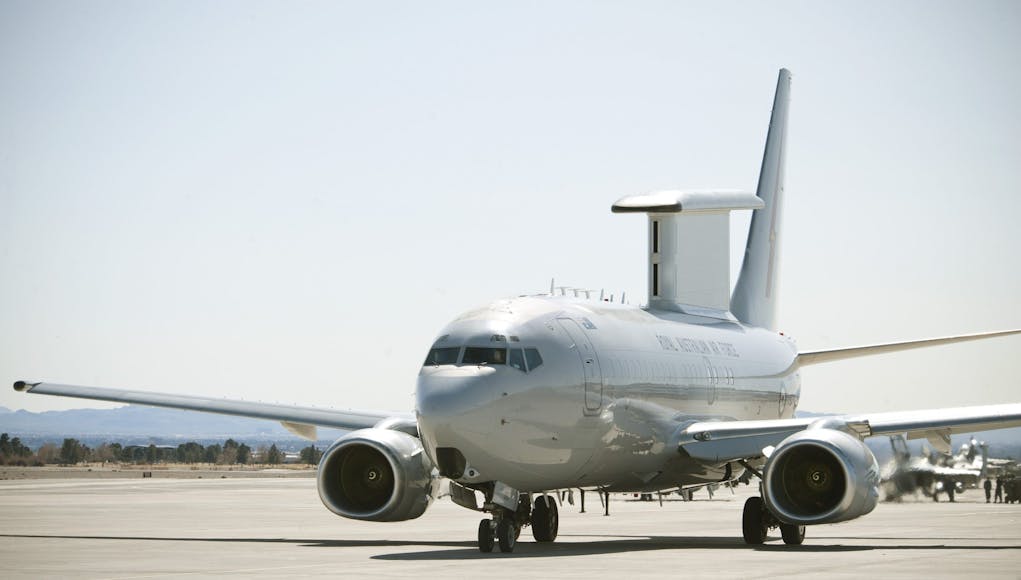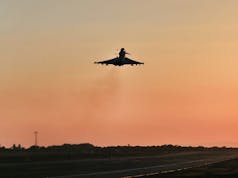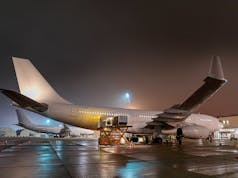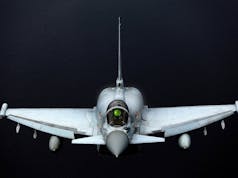The United States Air Force, Royal Australian Air Force, and Royal Air Force have jointly completed a landmark test certifying the KC-46A Pegasus tanker to refuel the E-7A Wedgetail airborne early warning and control aircraft.
The milestone, announced on 30 April 2025 by the 412th Test Wing Public Affairs, marks a critical advance in interoperability, shared development, and future operational readiness across the trilateral alliance.
The test was carried out at Edwards Air Force Base in California under the 418th Flight Test Squadron’s Global Reach Combined Test Force. It involved an RAAF E-7A aircraft receiving fuel from a USAF KC-46A Pegasus—representing the first such aerial refuelling of the Australian platform by the American tanker.
The development not only improves Australia’s long-range operational flexibility but also accelerates test and certification timelines for the RAF and USAF, both of which are preparing to field their own E-7A fleets in the coming years.
RAAF Squadron Leader Owen Hamilton underscored the benefits of shared expertise: “We have already tested and overcome many early challenges typical of a new platform. This unique knowledge allows us to guide our allies in the UK and US to field their own E-7A Wedgetail capability faster.” RAF test pilot Squadron Leader Angus Lilly added: “We will soon begin flight testing our own E-7A aircraft, and this early collaboration will help us field our capability more efficiently.”
The test also highlighted the growing importance of integrated multinational testing and development. Challenges in data sharing between the previously unpaired E-7A and KC-46 platforms were addressed with assistance from Boeing and the KC-46 programme office. “Sharing data and understanding how to dissect and utilise the information is just as important as the actual test certification,” said Maj. Matthew Daughtery, USAF test pilot. “There are no benchmarks or precedents for aligning these systems… a key part of developmental testing is to find a path to success.”
With live testing set to begin soon in Britain, the hands-on experience in California gives RAF personnel valuable insight into system integration, refuelling dynamics, and coalition procedures.














Given the P8, C17, RC135 Rivet Joint, E7 and the M330 Voyager in RAF service can all only refuel via the probe systems it is high time we retrofitted some of our tankers to this method.
I wonder if the air tanker PFI has provision for this, surely we can’t pay any kind of penalty for refuelling aircraft that AirTanker are physically unable to refuel.
The article doesn’t say which method of refuelling was used. The KC-46A can do both refuelling types. I think it’s more that a KC-46A had never refuelled an E7 before. Nothing special from my point of view. But it’s still important in general, as sometimes unexpected peculiarities can crop up, especially when 2 relatively large planes are operating in close proximity. I understand the C-17 for example has problems with refuelling (which is known & handled with an avionics setting activated by the pilot when required). RAAF has been refuelling E7 for years using KC-30A/A330 MRTT aircraft, as has South Korea & so will RAF. Not sure on Turkey, but I don’t believe they use KC-46A.
??? The article doesn’t have to say which type was used for the E7 as it can only be refueled by the probe method.
The RAAFs A330 MRTTs have both probe and drogue capabilities so they can refuel any type of aircraft equipped for aerial refueling.
The RAF Voyagers only have drogue systems. So the RAF will NOT be able to refuel the RAF E7s. Unless the Voyagers are upgraded and fitted with probes the RAF will have to rely on other air forces to refuel their E7s.
Nor, as previous poster pointed out, can the RAF refuel its Rivet Joint, C17 or P8 fleet which severely limits that tactical and strategic utility as assets.
Cannot for the life of me understand the RAFs penny pinching logic on this issue.
There is no logic. It’s all about the money. Specifically the criminally bad air tanker contract.
You are correct the RAF does not have a tanker that is compatible with the E7 – guess we will just have to rely on our Allies !!!!
But which ‘allies’ can you trust to have a probe equipped tanker in the air where and when you need them. The US has the largest fleet of tankers but… How about France the largest European tanker fleet? Commentators on UKDJ seem to have a high level of distrust of the French. Maybe Spain or Germany? Again seems to be some animosity with UK.
I thought the lesson of Brexit was increased reliance on sovereign capabilities.
Australia to have 6, the U.S. with 26 and the U.K. with three. Tuekey and South Korea are to have four each.
I’m hoping SDR puts us back up to atleast 5.
Potential for UAS such as Protector to help make up the numbers. This would also tie in with RN’s Crowsnest replacement requirement for which the stol MQ-9b is the one to beat.
Unfortunately in this case size does matter.
While an MQ9 based AWACS could fly higher than an E7 (50,000 vs 40,000 feet) which theoretically could give it a better field of regard and stay on station longer (27 hours vs 10 hours unrefuelled for E7) the E7 has a time times larger payload.
Noting also the E7 can be refueled in the air (excepting by RAF tankers) and extend mission time. RAAF E7s have flown missions above Syria of over 17 hours.
This means the E7 can carry a much larger, heavier and more powerful radar than could ever be fitted to an MQ9. In any case the UAS power plant cannot generate anywhere near enough electrical power for a large radar array. So an E7 will always be an order of magnitude better capability than any current UAS platform including even larger HALE drones like Triton.
The other issue for a UAS based platform is the need for off board processing of the airborne data and target picture. The E7 has 10 crew mission stations on board with trained battle space managers. Typically an MQ9 control module consists of two flight crew. To be effective as an AWACS the MQ9 needs to replicate the E7s trained crew on the ground or at sea (if ship based).
So at a pinch an MQ9 based system could work or supplement an E7 but it is no replacement for the real deal.
E7 has a ten times larger payload
Fingers crossed.
Geoff / Jim every time someone mentions the E7 EVERY TIME! You lot on here always say the same thing “we only have 3 and we ordered 5” I even know the following from the last few times E7 was mentioned
“so 2 cancelled with the radars in store “
you are like Groundhog Day. Enough already 😆
Sorry MIke. Can you repeat that !!!!!
😂
Realistically the RAF need to add 3 x P8 to give them 12 total, 2 x E-7A to give them 5 and additional 3 x A330 MRTT in KC-30A (RAAF) configuration with two under-wing refuelling pods and an Aerial Refuelling Boom.
The two additional E-7As and additional P-8As would appear to be obviously low hanging fruit for harvest by the SDR, but presumption doth maketh us all fools.